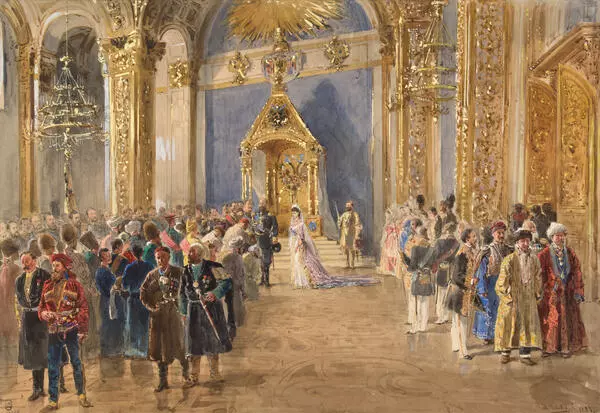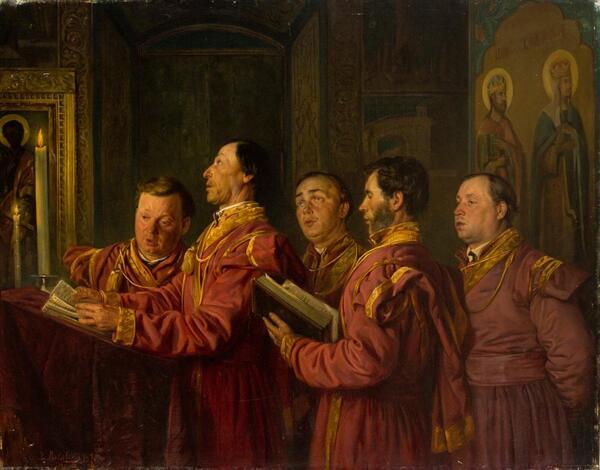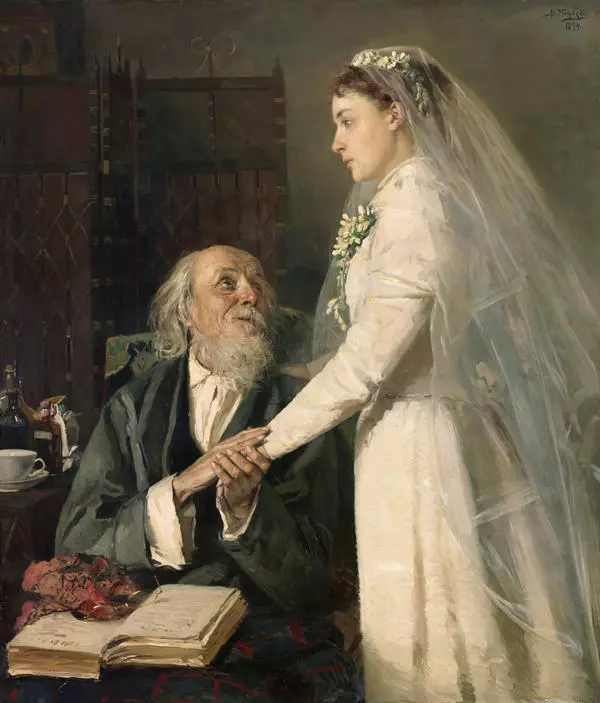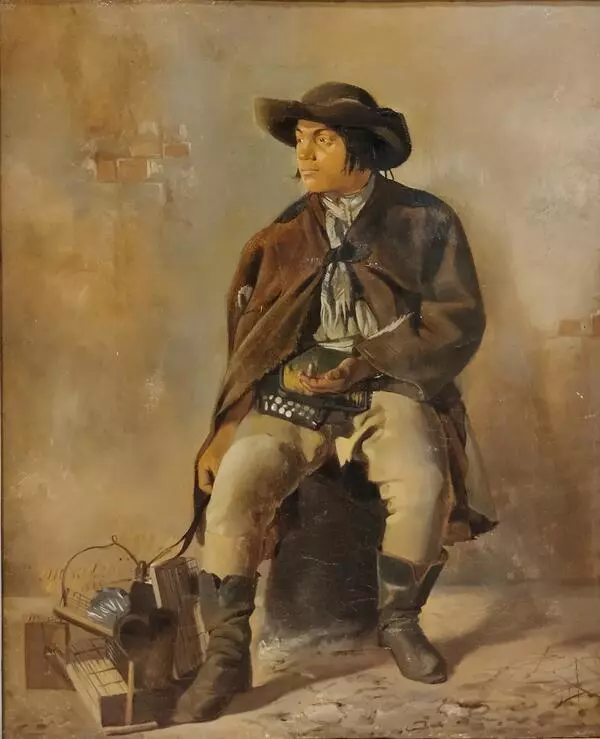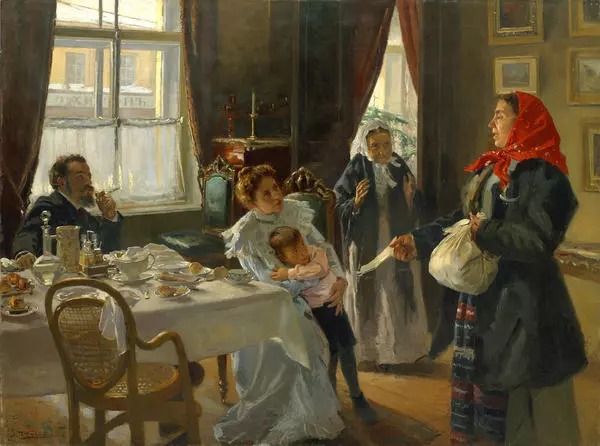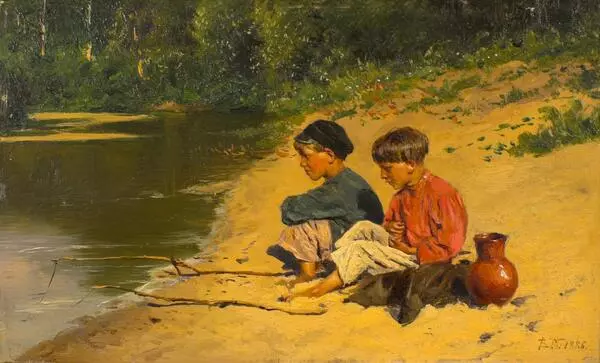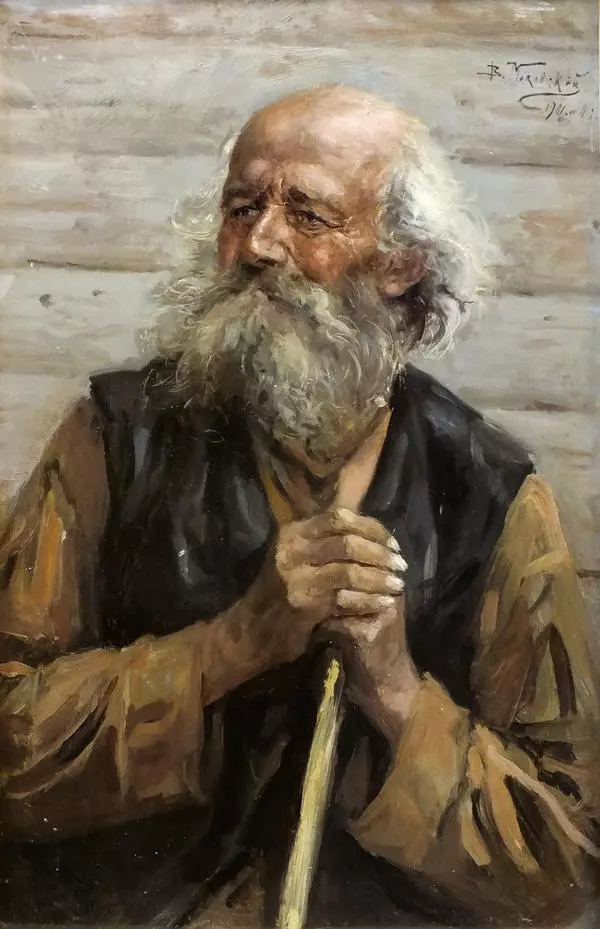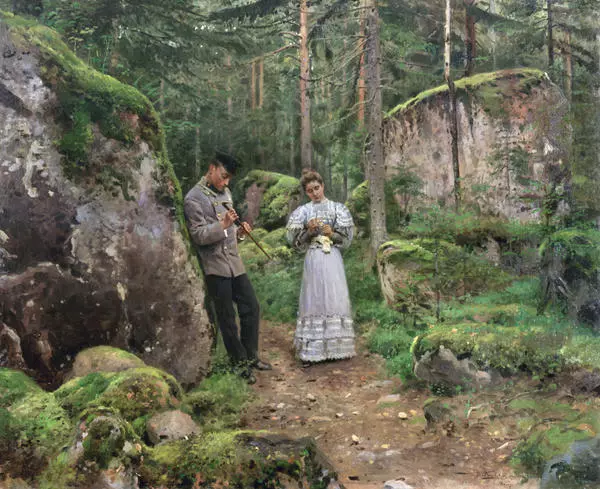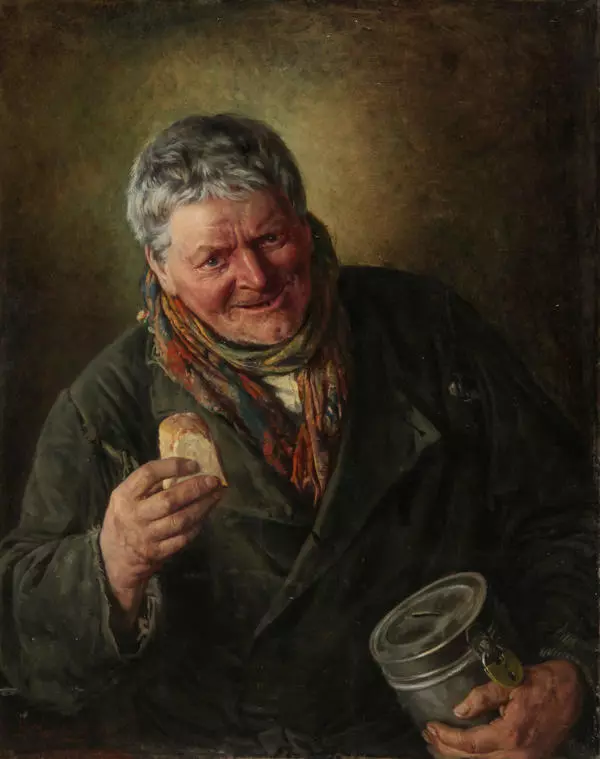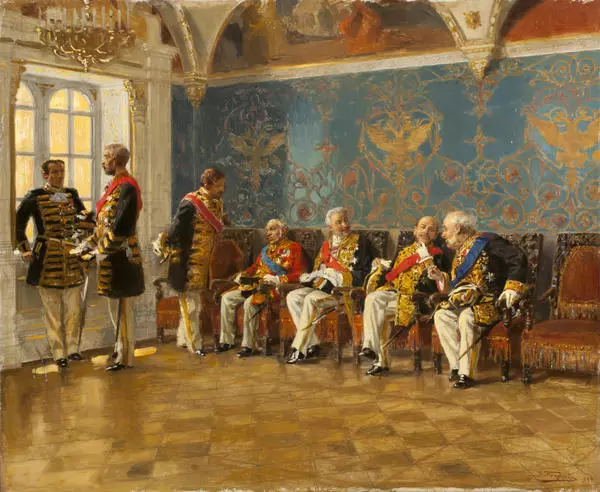Members of the Society of Travelling Art Exhibitions, the Makovsky brothers, were masters of the everyday life genre. Their father, an amateur artist Egor Makovsky, was one of the founders of Moscow drawing classes, which were later transformed into the Moscow School of Painting, Sculpture and Architecture.
Vladimir Makovsky graduated from the St. Petersburg Academy of Arts. He created both genre paintings and portraits, and also worked on illustrating books. In 1872, he joined the Society of Travelling Art Exhibitions. In his work, Makovsky turned to the images of the revolutionary intelligentsia, social criticism, social and political problems.
The painting ‘The Condemned’ displayed at the exhibition is a version of the canvas, which is kept in the Russian Museum. It depicts a young man in prison clothes under guard being taken out of the courtroom. The presence of the gendarmes indicates that the portrayed was arrested for a political crime. Nearby are old parents, and among those present you can see a male and a female student.
This picture is dedicated to the trials of 1877–1878. ‘The Trial of Fifty’, or the ‘Trial of Muscovites’, concerned participants in the All-Russian Social Revolutionary Organization. The revolutionaries-populists were tried on charges of participation in a ‘secret community, which set itself the goal of overthrowing the existing order.’ This was the first political process in Russia in which workers and women were actively involved. The process took place publicly from February 21 to March 14, 1877. The participants were sentenced to katorga (a kind of punishment in the Russian Empire that combined labor-camp imprisonment: confinement, simplified facilities), exile to Siberia, forced labor, and some people served sentences in prisons and restraining houses.
The second resonant trial of those years was the ‘Trial of One Hundred and Ninety-Three’ or ‘The Big Trial’. It was officially called the ‘Empire Propaganda Case’. The populist revolutionaries were tried in St. Petersburg in the Special Presence of the Governing Senate. The defendants in the case were the participants in the ‘going to the people’ movement who were arrested for revolutionary propaganda in 1873–1877. The entire community was accused of preparing ‘the overthrow of the order of government.’ The indictment indicated their readiness to commit crimes, incriminated them with the intention to ‘massacre all officials and wealthy people’, condemned their ‘doctrine promising in the form of the nearest feasible blessing a living at someone else’s expense.’
The painting “The Condemned”, created during this period, caused a great public outcry.
Vladimir Makovsky graduated from the St. Petersburg Academy of Arts. He created both genre paintings and portraits, and also worked on illustrating books. In 1872, he joined the Society of Travelling Art Exhibitions. In his work, Makovsky turned to the images of the revolutionary intelligentsia, social criticism, social and political problems.
The painting ‘The Condemned’ displayed at the exhibition is a version of the canvas, which is kept in the Russian Museum. It depicts a young man in prison clothes under guard being taken out of the courtroom. The presence of the gendarmes indicates that the portrayed was arrested for a political crime. Nearby are old parents, and among those present you can see a male and a female student.
This picture is dedicated to the trials of 1877–1878. ‘The Trial of Fifty’, or the ‘Trial of Muscovites’, concerned participants in the All-Russian Social Revolutionary Organization. The revolutionaries-populists were tried on charges of participation in a ‘secret community, which set itself the goal of overthrowing the existing order.’ This was the first political process in Russia in which workers and women were actively involved. The process took place publicly from February 21 to March 14, 1877. The participants were sentenced to katorga (a kind of punishment in the Russian Empire that combined labor-camp imprisonment: confinement, simplified facilities), exile to Siberia, forced labor, and some people served sentences in prisons and restraining houses.
The second resonant trial of those years was the ‘Trial of One Hundred and Ninety-Three’ or ‘The Big Trial’. It was officially called the ‘Empire Propaganda Case’. The populist revolutionaries were tried in St. Petersburg in the Special Presence of the Governing Senate. The defendants in the case were the participants in the ‘going to the people’ movement who were arrested for revolutionary propaganda in 1873–1877. The entire community was accused of preparing ‘the overthrow of the order of government.’ The indictment indicated their readiness to commit crimes, incriminated them with the intention to ‘massacre all officials and wealthy people’, condemned their ‘doctrine promising in the form of the nearest feasible blessing a living at someone else’s expense.’
The painting “The Condemned”, created during this period, caused a great public outcry.





